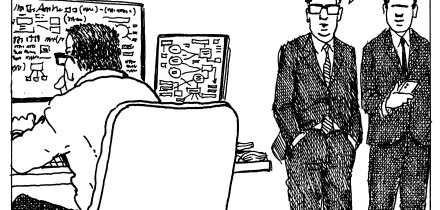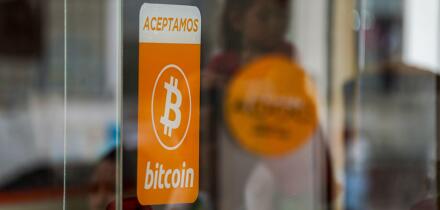The View From Fifty Thousand Feet
For most investors, risk is a thing to be dreaded and avoided. Clearly, however, someone has to be willing to accept that which others do not want. In general, it is not possible for everyone to decrease their total risk.
Typically, investors wind up trading one type of risk for another, often without consciously intending to do so. For example, investors who are unwilling to accept the stock market's volatility may opt for the safety of a Federal Deposit Insurance Corp.-insured certificate of deposit. In so doing, they may incur a greater risk of failing to meet a long-term financial goal requiring a higher level of expected return.
Some make this risk trade-off consciously, feeling that the type of risk they are accepting is preferable to the type they are putting on someone else's shoulders. Others do it without realizing that they have incurred a new risk at all.
For risk professionals, there are increasingly more opportunities for specific risks to be mitigated. In these situations, the role of the speculator, the insurer, and their most recent, younger siblings--the financial engineer and the derivatives professional--comes to the fore.
Using a multitude of maps, models, and techniques, risk professionals identify the opportunities that lie hidden in the risks others refuse to accept. Unlike most investors, for whom risk is the "evil twin" that accompanies opportunity, risk professionals apply the lens of their investment analysis to the risks themselves, valuing and pricing risk just as though it were another commodity. Risk professionals work at one remove-- the "meta-level"--from the naïve return data used by most other investors.
The Conservation of Risk
Let's postulate that total risk is a conserved quantity, like momentum or mass/energy in physics. Adoption of this postulate--let's call it The Conservation of Risk--means that risk equations will always balance by definition--just like the force equation of Newtonian physics.
That equation,
[1] F = ma
seems to be a simple assertion of an identity between force (understood as a 3-vector) and the product of (scalar) mass and acceleration (also a 3-vector).
Equation [1] is more than a simple identity; it is, in fact, an injunction to scientists telling them what to look for and how to interpret what they observe. It says, in effect, "find the forces" that will make this equation true.
Analogously, we may frame a Total Risk Equation of the form:
[2]RTot = F(R1,R2,...,RN)
where RTot = total risk, a conserved quantity
F is an unspecified function
and R1,R2,...,RN are measures of individual types of risk.
Equation [2] tells us very little about how the individual types of risk are related, only that there is some function F that maps each set of Ri into RTot , a conserved quantity.
What does it mean to say that RTot is a conserved quantity? It does not mean that the total amount of risk never changes! It means that one can define a certain type of system, called a closed system, in which the total risk, RTot, is constant. For such systems, any reduction in one (or more) types of risk will be accompanied by a corresponding increase in one (or more) other types.
Thus, we have, for closed systems, the following equation:
[3] RTot = F(R1,R2,...,RN) = F(R1',R2',...,RN')
where RTot = total risk, a conserved quantity
F is an unspecified function
R1,R2,...,RN are measures of individual types of risk
and R1',R2',...,RN' are another set of measures of individual risks.
In some circumstances, we may find that the function F is of the form:
[4] RTot = F(R1,R2,...,RN) = a1R1+a2R2+...+anR N
where the ai are scaling constants. We might even be able to dispense with the ai by scaling our individual units of risk to make measurement consistent across all types. Then we would have
[5] RTot = F(R1,R2,...,RN) = R1+R2+...+RN
Comparing equation [1] with equations [2]-[5], we may ask, just what type of quantity is RTot? Is it a scalar, like mass? Or is it a vector, with multiple independent components, like acceleration or force?
In physics, conservation laws exist for scalar quantities, like mass/energy. They also exist for vector quantities like momentum and angular momentum. So there is no basis for deciding the issue in this way. Total risk is too complex an entity for it to be usefully considered a scalar. It seems that we need vectors with more than one dimension to capture the many aspects of risk.
Even a vector treatment of risk may not provide a workable framework. It may be better still to think about and to express total risk in terms of tensors-- mathematical forms that generalize the notion of vectors, widely applied in physics and engineering.
Returning, then, to the question "what type of quantity is risk?" a tentative answer is that it is probably not a scalar-- it is probably at least a vector (of dimension two or higher), and possibly a tensor (of rank two or higher.)
Just as the true meaning of Equation [1] is an injunction to physicists to find the forces that will balance the equation, the true meaning of Equations [2]-[5] is an injunction to risk professionals: find the risks that will balance the equation, or more precisely, find the risks and create a set of metrics and mappings that will balance the full set of equations that can be derived from this one simple conservation law.
From Theory to Practice
What are the practical implications of The Conservation of Risk? As an example of how to apply this framework, consider the interplay among the categories of market, credit, and operational risk. While these types of risk can be defined so that there is no overlap between them, they have a disturbing habit of ignoring such niceties and blurring one into the other.
For example, a computer systems error--itself an operational risk come true-- may give rise to a cascade of other operational problems, counterparty (credit) failures, and market events. Analogous cascades could begin with credit or market mishaps. Like the Great Chicago Fire, all it takes is a kick from a well-positioned cow.
The Conservation of Risk is powerless to avert such disasters; it merely reminds us that we are constantly trading off one risk against another: market risk for inflation risk, as in the earlier example. It alerts us to look for these tradeoffs, instead of resting with the illusion that we have found a riskless strategy.
The fantasy of the riskless strategy dies hard. We find a way to beat the market or to produce a widget at half the cost. In the market case, we should not forget about model risk, or its close relative, maverick risk. In the widget case, we have all seen repeated instances of highly efficient systems that turned out to be highly brittle as well, replete with "SPOFs" (single points of failure.) In still other cases, these systems harbor hidden costs, sometimes found almost immediately, other times only years later.
Through understanding this conservation law, we begin always to look for the hidden tradeoffs in the decisions we make, as investors, risk managers, even in our everyday lives. By becoming aware of these tradeoffs early in the game, we are less likely to be haunted by their consequences.
This week's Learning Curve was written byMarc Groz, president of The Quaternion Group, a mathematical consulting firm in New York





